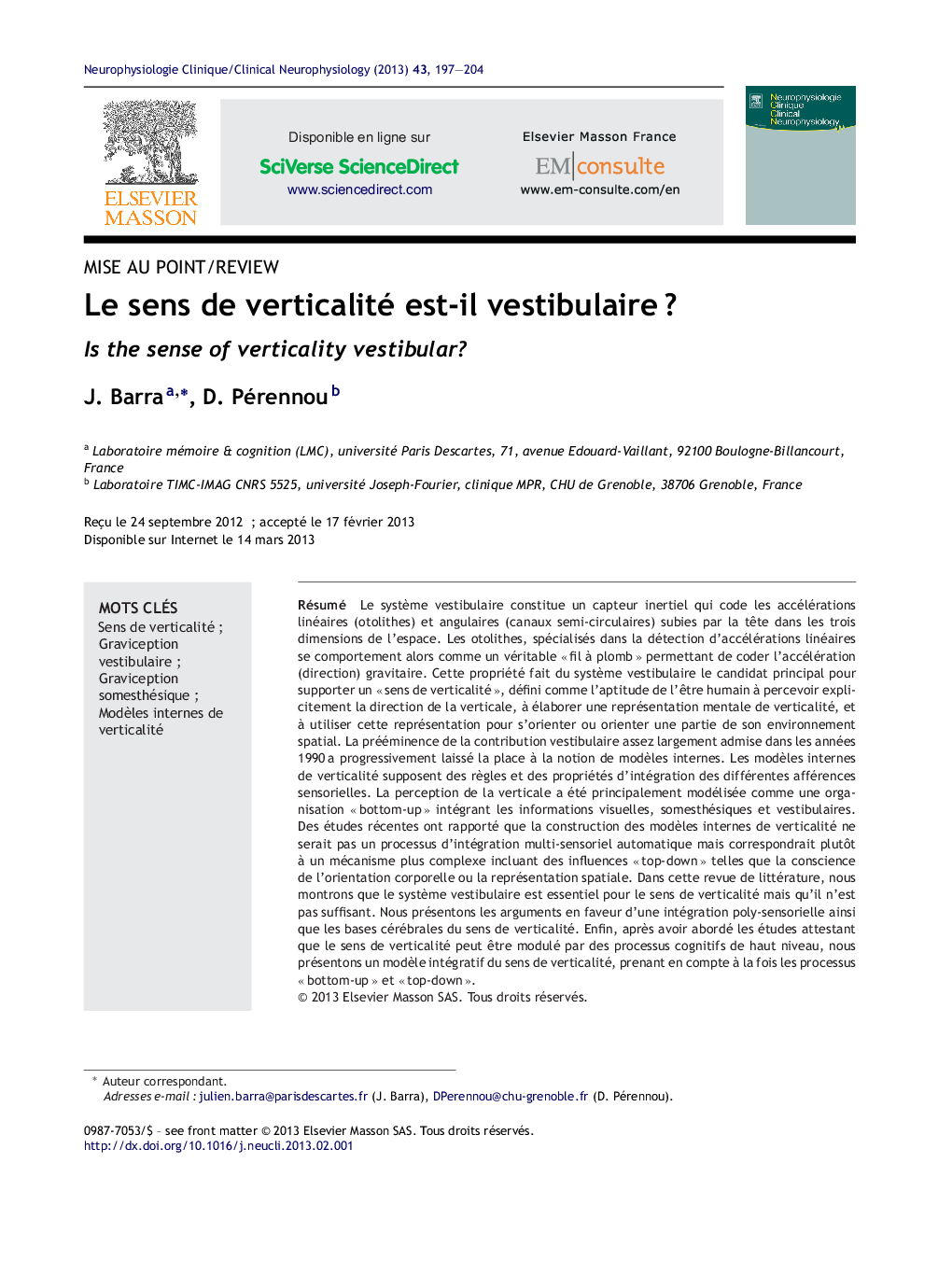| Article ID | Journal | Published Year | Pages | File Type |
|---|---|---|---|---|
| 3082433 | Neurophysiologie Clinique/Clinical Neurophysiology | 2013 | 8 Pages |
Abstract
The vestibular system constitutes an inertial sensor, which detects linear (otoliths) and angular (semicircular canals) accelerations of the head in the three dimensions. The otoliths are specialized in the detection of linear accelerations and can be used by the brain as a “plumb line” coding earth gravity acceleration (direction). This property of otolithic system suggested that the sense of verticality is supported by the vestibular system. The preeminence of vestibular involvement in the sense of verticality stated in the 1900s was progressively supplanted by the notion of internal models of verticality. The internal models of verticality involve rules and properties of integration of vestibular graviception, somaesthesic graviception, and vision. The construction of a mental representation of verticality was mainly modeled as a bottom-up organization integrating visual, somatosensory and vestibular information without any cognitive modulations. Recent studies reported that the construction of internal models of verticality is not an automatic multi-sensory integration process but corresponds to more complex mechanisms including top-down influences such as awareness of body orientation or spatial representations.
Related Topics
Life Sciences
Neuroscience
Neurology
Authors
J. Barra, D. Pérennou,
